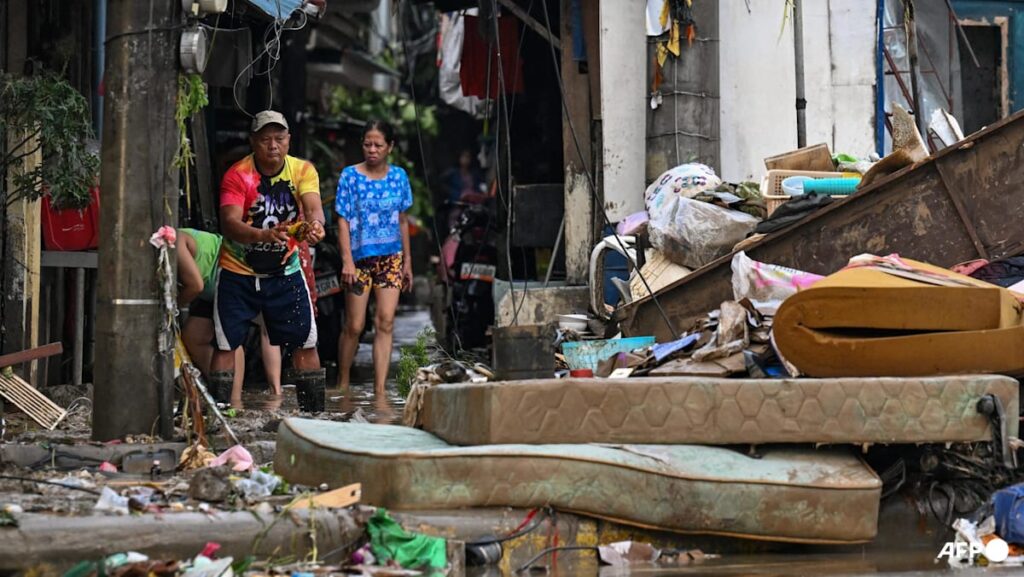“THE WATER WAS RAGING”
AFP reporters spoke with residents of Cebu’s most-affected areas on Wednesday as they cleaned up streets that had been rivers a day before.
“Around four or five in the morning, the water was so strong that you couldn’t even step outside,” said Reynaldo Vergara, 53, adding that everything in his small shop in Mandanaue had been lost when a nearby river overflowed.
“Nothing like this has ever happened. The water was raging.”
In nearby Talisay, where an informal settlement along a riverbank was washed away, AFP found 26-year-old Regie Mallorca already at work rebuilding his home.
“This will take time because I don’t have the money yet. It will take months,” he said as he mixed cement and sand atop the rubble.
The area around Cebu City was deluged with 183mm of rain in the 24 hours before Kalmaegi’s landfall, well over its 131mm monthly average, weather specialist Charmagne Varilla told AFP.
On Tuesday, provincial governor Pamela Baricuatro called the situation “unprecedented” and “devastating”.
Scientists warn that storms are becoming more powerful due to human-driven climate change. Warmer oceans allow typhoons to strengthen rapidly, and a warmer atmosphere holds more moisture, meaning heavier rainfall.
In total, nearly 800,000 people were moved from the typhoon’s path.
https://www.channelnewsasia.com/asia/typhoon-kalmaegi-philippines-cebu-death-toll-5446181


